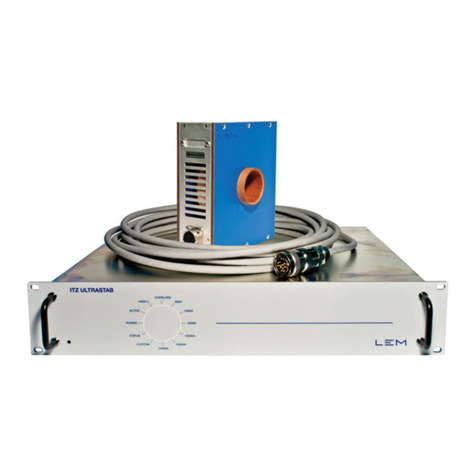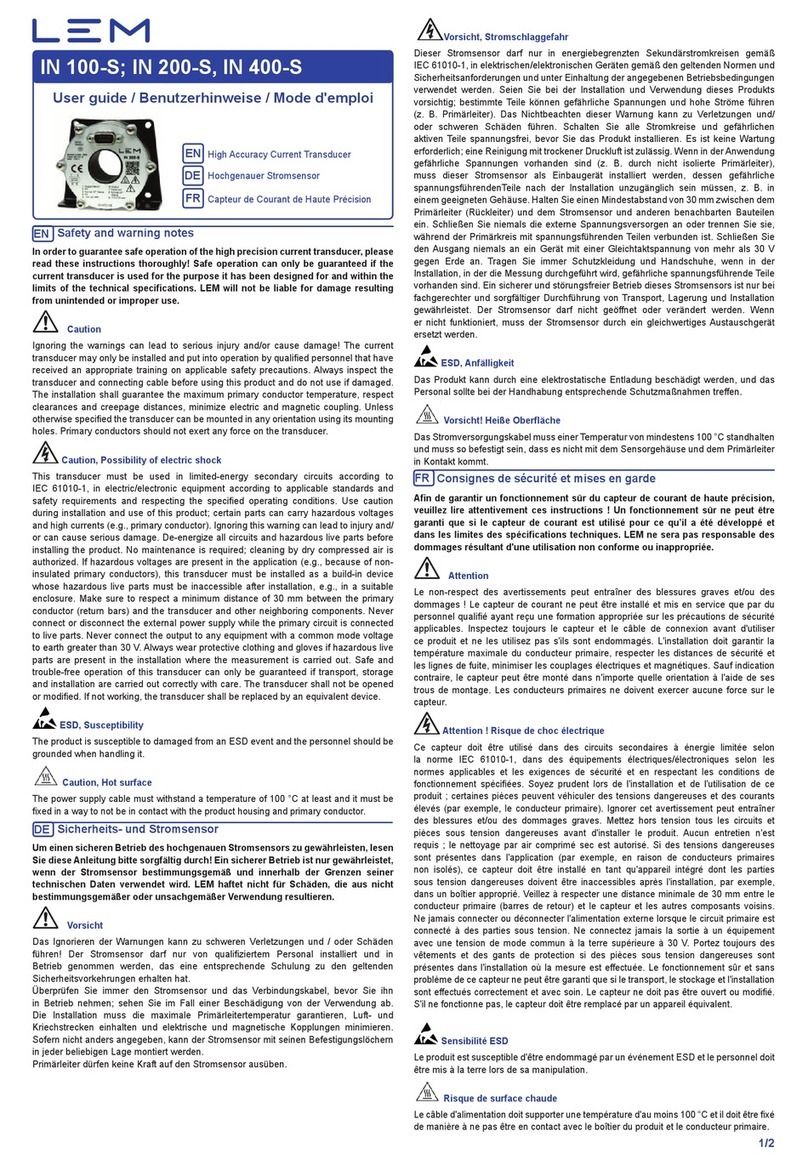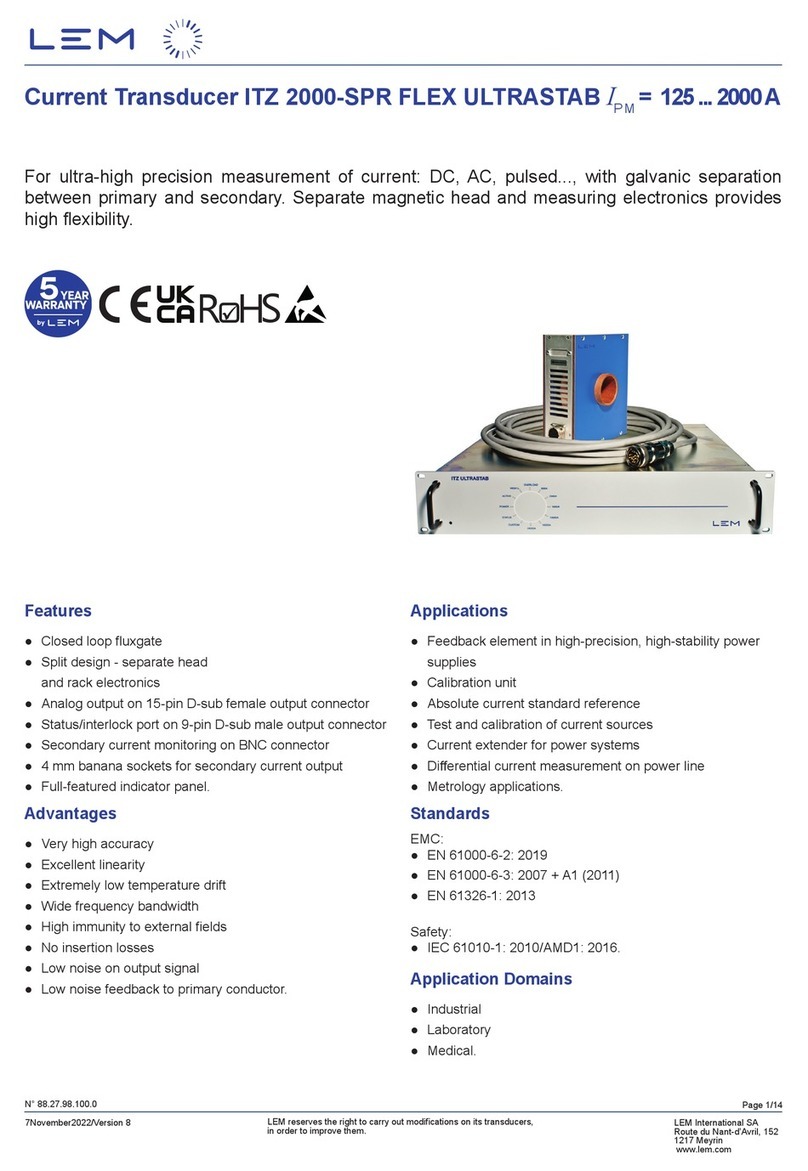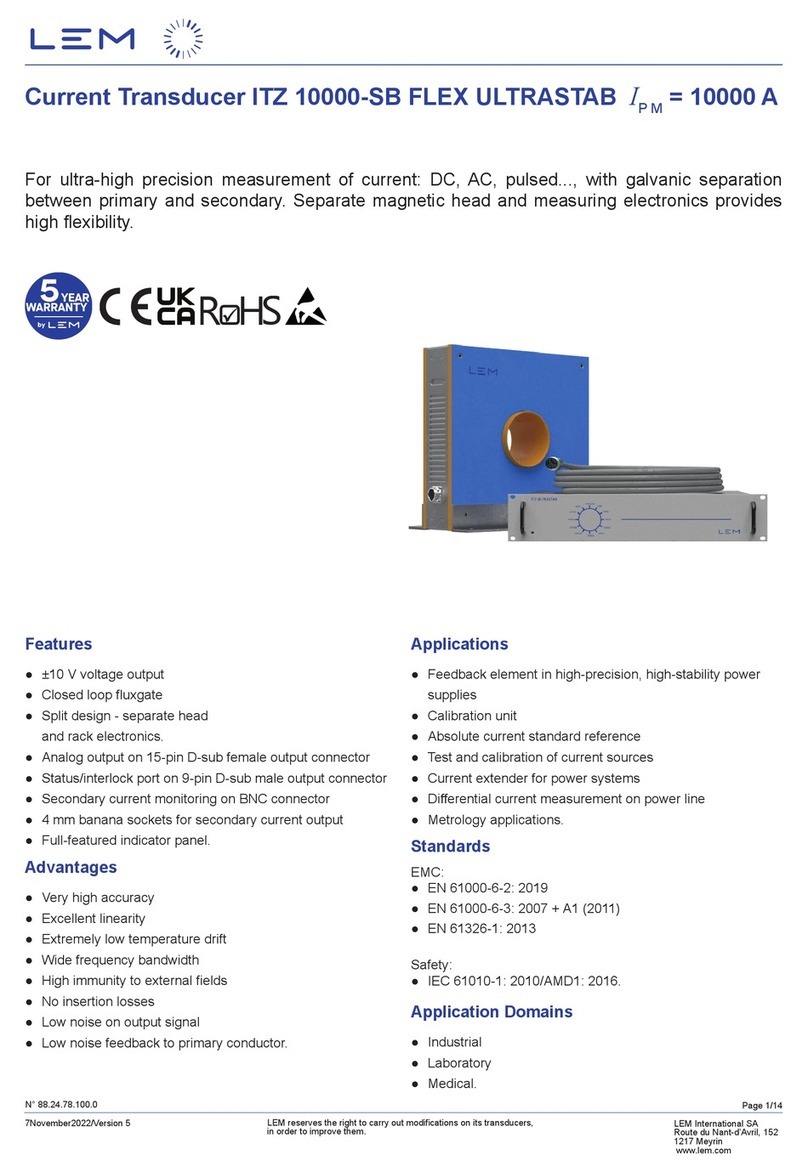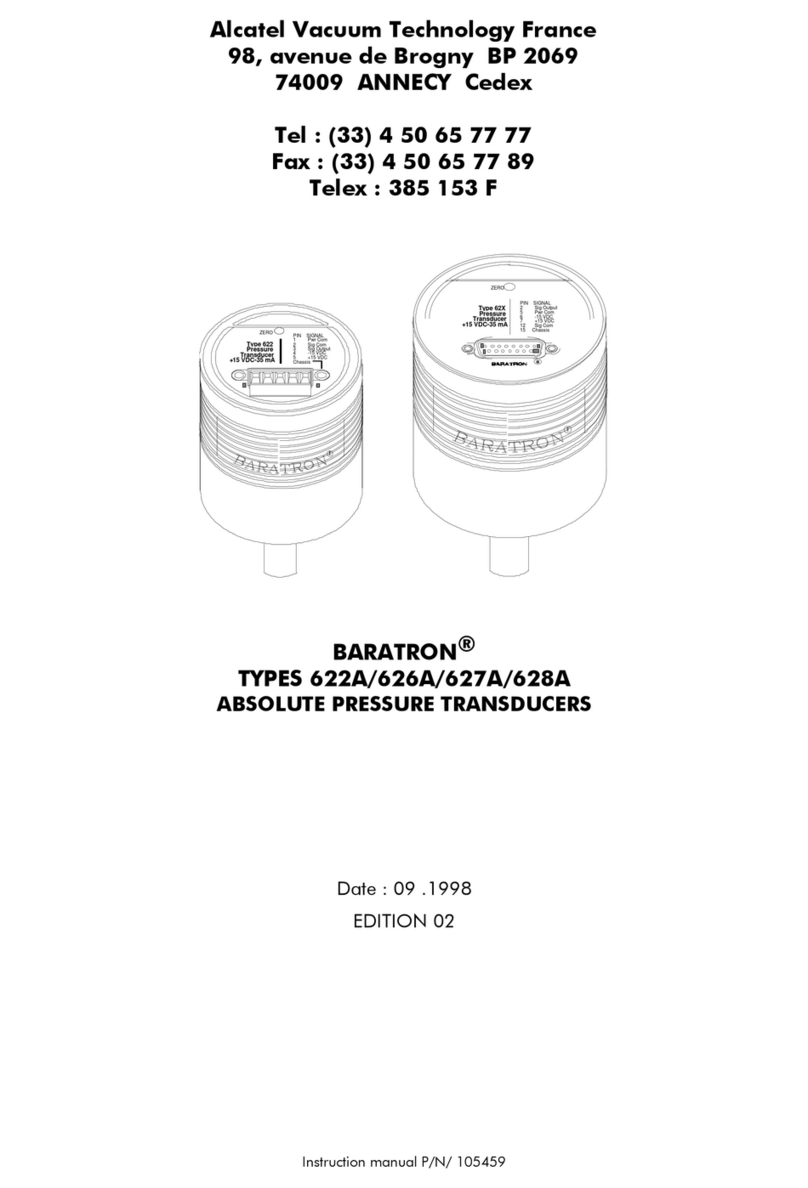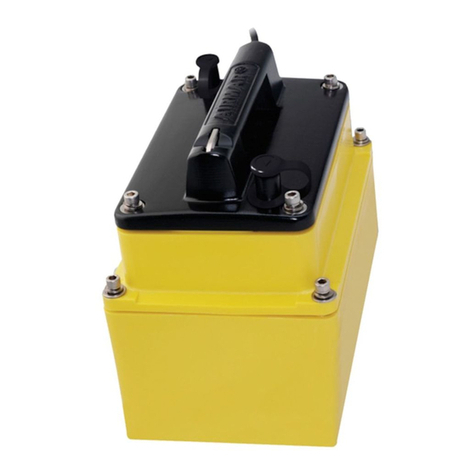
Page 4/9
9December2022/Version 4 LEM reserves the right to carry out modications on its transducers,
in order to improve them. LEM International SA
Route du Nant-d’Avril, 152
1217 Meyrin
www.lem.com
DVL 1500/SP8
Electrical data
At TA = 25 °C, ±UC = ±24 V, RM = 100 Ω, unless otherwise noted.
Lines with a * in the conditions column apply over the −40 … 85 °C ambient temperature range.
Parameter Symbol Unit Min Typ Max Conditions
Primary nominal RMS voltage UP N V1500 *
Primary voltage, measuring range UP M V−2250 2250 *
Measuring resistance RMΩ0120 *
See derating on gure 2.
For │UP M│< 2250 V,
max value of RMis given
on gure 1
Secondary nominal RMS current IS N mA 50 *
Secondary current ISmA −75 75 *
Supply voltage ±UCV±13.5 ±24 ±26.4 *
Rise time of UC (10-90 %) trise ms 100
Current consumption
@ UC =± 24 V at UP =0 V ICmA 20 25
Inrush current NA (EN 50155)
Interruptions on power supply voltage class NA (EN 50155)
Supply change-over class NA (EN 50155)
Oset current IOμA −50 050 100 % tested in production
Temperature variation of IOIO TµA −120
−150
120
150
−25 ... 85 °C
−40 ... 85 °C
Sensitivity SµA/V 33.33 50 mA for primary 1500 V
Sensitivity error εS%−0.2 00.2
Temperature variation of sensitivity error εST%−0.5 0.5 *Referred to 25 °C
Linearity error εL% of UP M −0.5 0.5 *±1500 V range
Total error εtot % of UP N
−0.5
−1
0.5
1
*
25 °C; 100 % tested in production
−40 ... 85 °C
RMS noise current reered to primary Ino μA 10 1 Hz to 100 kHz
Delay time @ 10 % of the nal output
value UP N step tD 10 μs 30
Delay time @ 90 % of the nal output
value UP N step tD 90 μs 50 60 0 to 1500 V step, 6 kV/μs
Frequency bandwidth BW kHz
14
8
2
−3 dB
−1 dB
−0.1 dB
Start-up time tstart ms 190 250 *
Resistance of primary (winding) RPMΩ 11.3 *
Total primary power loss @ UP N PPmW 0.2 *
Denition of typical, minimum and maximum values
Minimum and maximum values for specied limiting and safety conditions have to be understood as such as well as values
shown in “typical” graphs.
On the other hand, measured values are part of a statistical distribution that can be specied by an interval with upper and lower
limits and a probability for measured values to lie within this interval.
Unless otherwise stated (e.g. “100 % tested”), the LEM denition for such intervals designated with “min” and “max” is that the
probability for values of samples to lie in this interval is 99.73 %.
For a normal (Gaussian) distribution, this corresponds to an interval between −3 sigma and +3 sigma. If “typical” values are not
obviously mean or average values, those values are dened to delimit intervals with a probability of 68.27 %, corresponding to
an interval between −sigma and +sigma for a normal distribution.
Typical, maximal and minimal values are determined during the initial characterization of a product.



